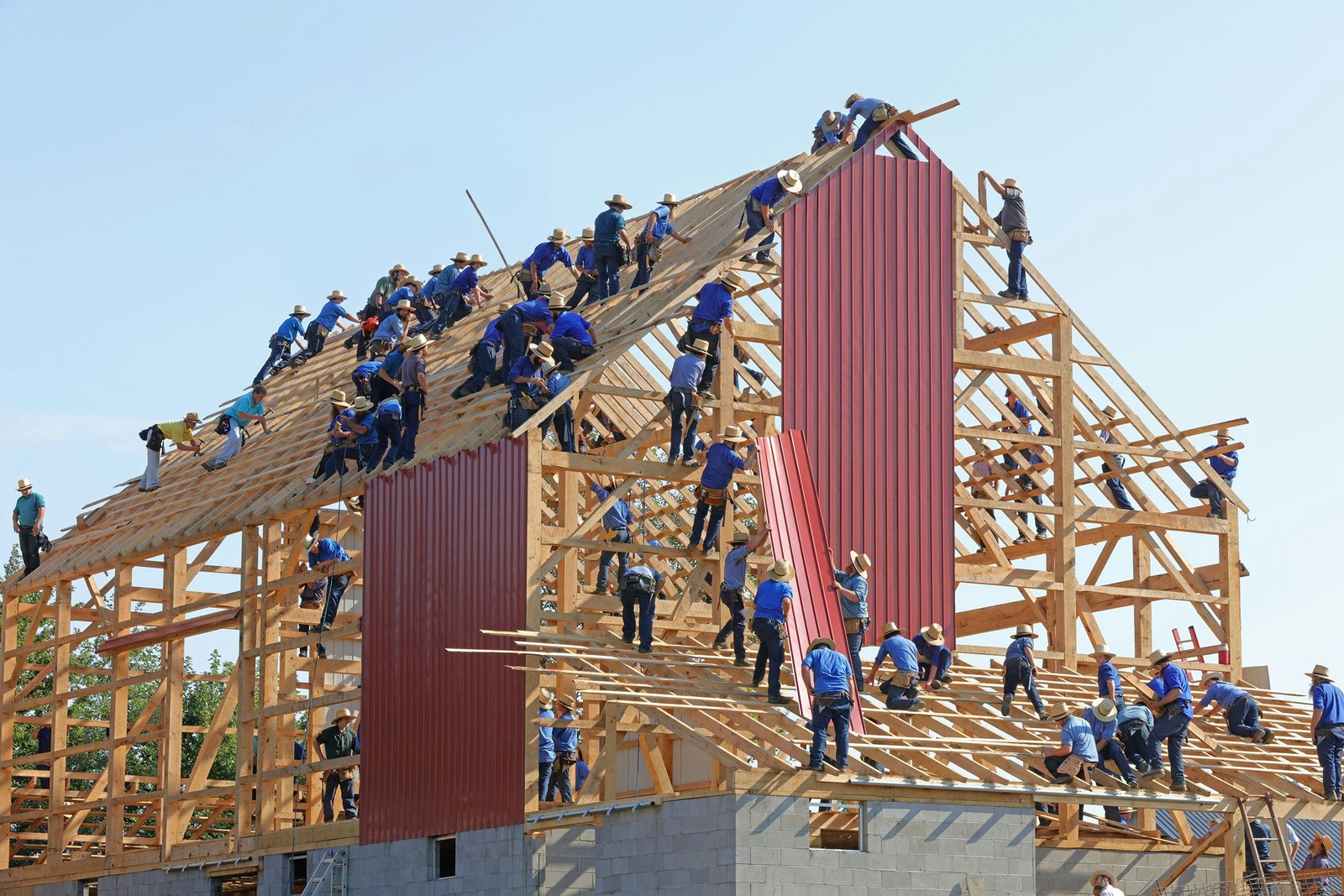Introduction to XCV Panel and its members
Step into a world where innovation meets sustainability, where cutting-edge technology is paving the way for a greener future in construction. Welcome to the realm of XCV Panel – a group of industry pioneers dedicated to revolutionizing building materials and practices. Join us on a journey to explore the forefront of sustainable construction solutions and discover how these advancements are reshaping the landscape of architecture and design.
What are sustainable building materials and why are they important?

Sustainable building materials are environmentally friendly resources used in construction projects. These materials are designed to minimize negative impacts on the environment, reduce energy consumption, and promote a healthier indoor living environment. By utilizing sustainable materials such as recycled steel, bamboo, straw bales, and reclaimed wood, builders can lower carbon emissions and decrease waste production.
The importance of sustainable building materials lies in their ability to combat climate change by reducing greenhouse gas emissions throughout the lifecycle of a building. Additionally, these materials help conserve natural resources like water and energy while promoting eco-friendly practices within the construction industry.
Choosing sustainable building materials not only benefits the planet but also improves the overall quality and longevity of buildings. With increasing awareness about environmental sustainability, incorporating these materials into construction projects has become essential for creating a greener future for generations to come.
The current state of the building industry and the need for sustainable materials

The current state of the building industry is at a crossroads, with increasing awareness of the environmental impact of traditional construction materials. The need for sustainable building materials has never been more pressing as we strive to reduce carbon emissions and promote eco-friendly practices.
Builders and developers are recognizing the importance of incorporating sustainable materials into their projects to minimize their ecological footprint. From recycled steel and reclaimed wood to energy-efficient insulation and solar panels, there is a growing trend towards using innovative solutions that prioritize sustainability.
However, despite the growing demand for sustainable materials, there are challenges in widespread adoption. Cost considerations, limited availability, and lack of awareness among stakeholders can hinder progress in transitioning towards more environmentally friendly construction practices.
As we look ahead to the future of the building industry, it is clear that embracing sustainable materials will be key to creating greener and more resilient structures that benefit both people and the planet.
Innovative sustainable materials being used in the market today

As the construction industry shifts towards sustainability, innovative materials are revolutionizing the way buildings are designed and built. One such material is cross-laminated timber (CLT), which offers a renewable alternative to traditional concrete and steel. CLT not only reduces carbon emissions but also provides excellent structural integrity.
Another groundbreaking material making waves in the market is recycled plastic bricks. By repurposing plastic waste into durable building blocks, this sustainable solution helps combat both environmental pollution and the demand for conventional bricks made from finite resources.
Furthermore, bio-based insulation materials like cork and hemp offer natural alternatives that enhance energy efficiency while minimizing ecological impact. These forward-thinking solutions showcase the ingenuity of modern construction practices striving for a greener future.
Challenges faced in implementing sustainable materials in construction projects

Implementing sustainable materials in construction projects comes with its fair share of challenges. One major hurdle is the higher upfront cost associated with these materials compared to traditional options. This can deter some builders and developers from making the switch, despite the long-term benefits.
Another challenge is the limited availability of sustainable materials in certain regions, making it difficult for construction projects to source them locally. Transportation costs and logistics can further add to the overall expenses.
Additionally, there may be a lack of awareness or understanding among stakeholders about the performance and durability of sustainable materials. Educating architects, contractors, and clients about the advantages of these products is crucial for widespread adoption.
Moreover, integrating new sustainable materials into existing building practices may require adjustments to construction techniques and processes. This transition period could pose logistical challenges and delays if not properly planned for in advance.
Future developments and advancements in the field of sustainable building materials

As we look ahead to the future of sustainable building materials, exciting developments and advancements are on the horizon. Researchers and innovators are constantly pushing boundaries to create materials that are not only environmentally friendly but also highly durable and cost-effective.
One area of focus is biodegradable materials that can reduce waste during construction and demolition processes. Imagine a world where buildings can naturally decompose at the end of their lifecycle, leaving behind minimal environmental impact.
Furthermore, advancements in technology are enabling the creation of smart materials that can adapt to environmental conditions, improving energy efficiency and overall sustainability. These materials have the potential to revolutionize how we design and construct buildings, making them more responsive to their surroundings.
With increased awareness about climate change and resource depletion, there is a growing demand for sustainable building solutions. The future looks bright as more stakeholders collaborate to drive innovation in this crucial sector.
The role of government policies and regulations in promoting sustainability in construction

Government policies and regulations play a crucial role in driving the adoption of sustainable building materials within the construction industry. By setting standards and incentives, governments can encourage builders to prioritize eco-friendly options that reduce environmental impact. These regulations often push developers to consider factors like energy efficiency, recycled materials, and waste reduction during project planning.
Furthermore, government support for sustainable practices can help create a level playing field for businesses looking to invest in green technologies. This not only benefits the environment but also promotes innovation and economic growth within the sector. Incentives such as tax credits or grants can make it more financially viable for companies to choose sustainable alternatives over traditional materials.
Proactive government involvement is essential in shaping a more sustainable future for the construction industry. By aligning policies with environmental goals, we can drive positive change toward greener and more efficient building practices across the board.
Case studies of successful sustainable building projects using

Let’s delve into some inspiring case studies showcasing the real-world impact of sustainable building materials. In Vancouver, The VanDusen Botanical Garden Visitor Centre stands as a beacon of sustainability with its use of locally sourced wood and innovative water conservation systems. Moving across the globe to Singapore, the PARKROYAL on Pickering hotel impresses with its lush greenery integrated facades and rainwater harvesting techniques.
In California, The Bullitt Center in Seattle sets a new standard for green buildings by achieving net-zero energy usage through solar panels and advanced ventilation systems. Meanwhile, in Copenhagen, CopenHill redefines waste management by incorporating a ski slope on top of an incineration plant that converts waste into energy.
These projects not only demonstrate the feasibility of sustainable building practices but also showcase their aesthetic appeal and functionality in modern architecture. Stay tuned for more groundbreaking developments shaping the future of sustainable construction!
conclusion
In the ever-evolving world of construction, the XCV Panel and its members are at the forefront of driving innovation and sustainability in building materials. As awareness grows about the importance of sustainable practices, there is a pressing need to shift towards more eco-friendly solutions.
By incorporating innovative materials like recycled plastics, bamboo, and hempcrete, we can reduce environmental impact while still creating durable and efficient structures. Despite challenges such as cost implications and limited availability, advancements in technology continue to pave the way for a greener future in construction.
Government policies play a crucial role in promoting sustainable practices within the industry. By implementing regulations that prioritize eco-conscious choices, we can accelerate the adoption of sustainable building materials on a larger scale.
From green roofs to passive solar designs, successful case studies demonstrate that sustainable building projects are not only feasible but also beneficial for both the environment and occupants. As we look towards the future, it’s clear that sustainability will be key in shaping our built environment for generations to come.
The XCV Panel stands as a beacon of hope for a more sustainable future in construction. By embracing new technologies, pushing boundaries with innovative materials, and collaborating with policymakers and industry experts alike, we can build a world where sustainability is not just an option but a necessity. Let’s work together towards creating buildings that not only stand strong but also stand as symbols of our commitment to preserving our planet for future generations.

















